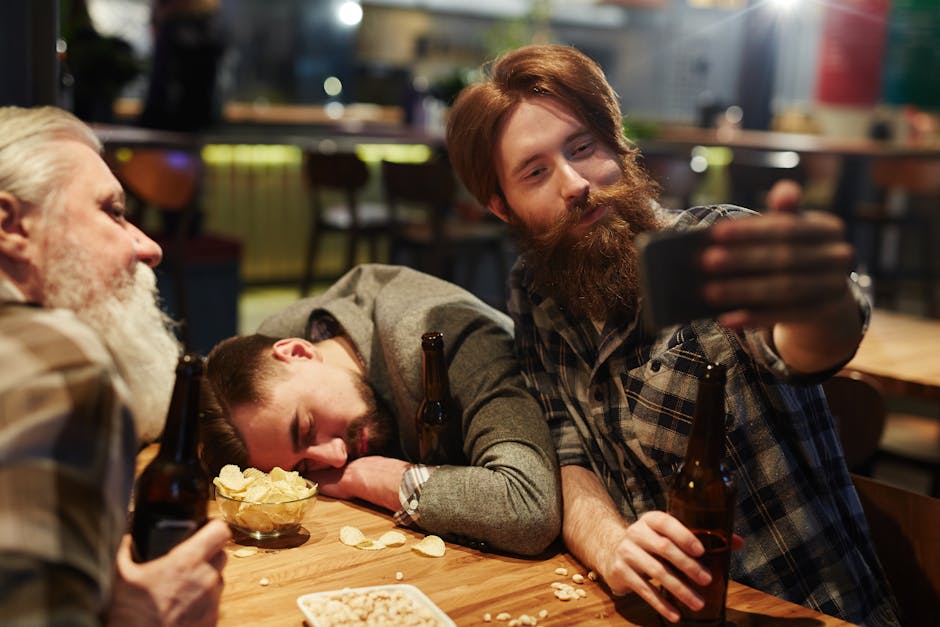Remember that sound, the dial-up modem screeching its song? It was the sound of connection. It was the sound of logging on to a whole new world.
Here in 2025, our internet is instant, it’s everywhere. It lives in our pockets and on our walls.
But sometimes it’s fun to look back. Back to the wild west days of social media.
These were the digital places where we first learned to overshare. To build a profile. To connect with strangers who liked the same weird bands as us.
Let’s take a little trip back. To the graveyards and ghost towns of the old social internet. It’s a weirdly nostalgic journey.
The Ghost Town of Myspace: More Than Just Tom
Everyone’s first friend on Myspace was Tom. He was always there, smiling in his profile picture. He was considered to be a constant.
Myspace was, for a time, the biggest social site on the planet. It was a chaotic, glitter-filled mess. And we loved it for that.
Your profile was your digital bedroom wall. You could plaster it with anything.
Awful, looping music that started automatically. Animated GIFs that sparkled and flashed. Backgrounds that were so busy you could barely read the text.
It was personal expression, cranked up to eleven. People spent hours, literally hours, tweaking HTML to get it just right.
Then there was the Top 8. A simple list of your top friends. But it was a source of so much real-world drama, I mean, it was intense.
Being kicked out of someone’s Top 8 was the ultimate digital insult. The social pressure was real.
So what happened? Basically, Facebook happened. Facebook was clean, uniform, and simple. Myspace got cluttered and full of ads.
It became slow and clunky. The freedom it offered was also its downfall, it is this freedom that made it too chaotic for most people.
Before Facebook, There Was Friendster (And Orkut!)
Long before Myspace even, there was this thing called Friendster. It was one of the first to get really big.
The whole idea was built around your network of friends. You could see how you were connected to other people.
It showed you friends, friends of friends, and so on. This was a new way of seeing your social circle mapped out online.
For a while, it was huge. Especially in parts of Asia. It really took off there.
But it had a major problem. The site was so, so slow. It just couldn’t handle how many people were using it.
Pages would take forever to load. This technical issue is the main reason why it failed, because users just got frustrated and left.
And let’s not forget Orkut. This was Google’s attempt at social media, way back. It never got big in the US.
But in places like Brazil and India, Orkut was massive. It was the main social network for millions of people for years.
Gone in 6 Seconds: The Brilliant, Brief Life of Vine
Now let’s jump forward a bit. To a more recent ghost. Remember Vine? Six seconds of looping video. That was it.
What a strange and wonderful place. The six-second limit wasn’t a bug, it was a feature.
It forced people to be incredibly creative. To tell a joke, show a magic trick, or make a piece of art in a tiny window of time.
It created a whole new kind of celebrity. Vine stars were a thing, and they were a big deal for a couple of years.
The humor was weird, fast, and repetitive. You’d watch the same six-second clip ten times, and it would get funnier each time.
Twitter bought Vine but then, typically, didn’t seem to know what to do with it. The creators couldn’t really make money there.
So they left for YouTube and Instagram. And without its best creators, Vine just sort of faded away. It was a shame, really.
Why Do We Even Care About These Old Sites?
So why are we talking about these dead platforms in 2025? It’s more than just nostalgia, though that’s a big part of it.
These sites are like digital fossils. They show us how the internet used to be, and they teach us a few things.
They remind us of a time when the web felt smaller. A little more personal and less corporate.
Each one was an experiment. Some worked, some failed spectacularly. But they all pushed the idea of online community forward in their own way.
They Weren’t All Good Times
Let’s be real, it wasn’t perfect. These sites were often clunky. They were full of spam and weirdos. Privacy was something nobody really thought about yet. We just put everything out there for the world to see, normally without a second thought.
They Paved the Way
Every feature we use today has roots in these old platforms.
The Profile: Myspace let you make it your own.
The Friend List: Friendster mapped it all out for you.
Short-Form Video: Vine basically invented the format that TikTok now owns.
They were the pioneers. They made the mistakes so that today’s social media giants didn’t have to.
A Simpler Time Online
The biggest difference is the feeling. Back then, your feed was just your friends. There wasn’t a super-smart algorithm deciding what you should see. It felt more genuine, somehow. Less polished and more human. It was just a chronological list of what people you knew were up to.
—
Frequently Asked Questions (FAQs)
What was the very first social media site?
Most people point to a site called Six Degrees, launched way back in 1997. It let you create a profile and make a list of friends. It was ahead of its time.
Why did Myspace fail so badly?
It was a mix of things. It got super cluttered with ads and customization. The site became very slow. At the same time, Facebook came along with a clean, simple, and faster design that people preferred.
Can you still get into your old Myspace account?
Sort of. Myspace still exists as a music-focused site. You might be able to find your old profile, but it will look totally different and a lot of the old stuff, especially the music people uploaded, was lost in a server migration years ago.
Will a platform like Vine ever come back?
People have tried. There was an app called Byte that tried to be the “new Vine,” but it never caught on. It’s hard to capture that same magic twice. TikTok is so big now, it’s tough for a new short video app to compete.
What was the point of Friendster’s “degrees of connection”?
It was about seeing your network visually. The idea was to help you meet new people through the friends you already had. If you saw someone was a “friend of a friend,” you might be more likely to connect with them.
—
Key Takeaways
Nostalgia for the early internet is a powerful thing. We miss the feeling of discovery and chaos from sites like Myspace.
Old social media sites usually died for a reason. They were either too slow, got too messy, or were outplayed by a newer, simpler competitor.
These platforms weren’t failures. They were stepping stones that created the blueprint for the social media we use in 2025.
The internet is always changing. The apps we think are permanent today could easily be the digital ghost towns of tomorrow.



